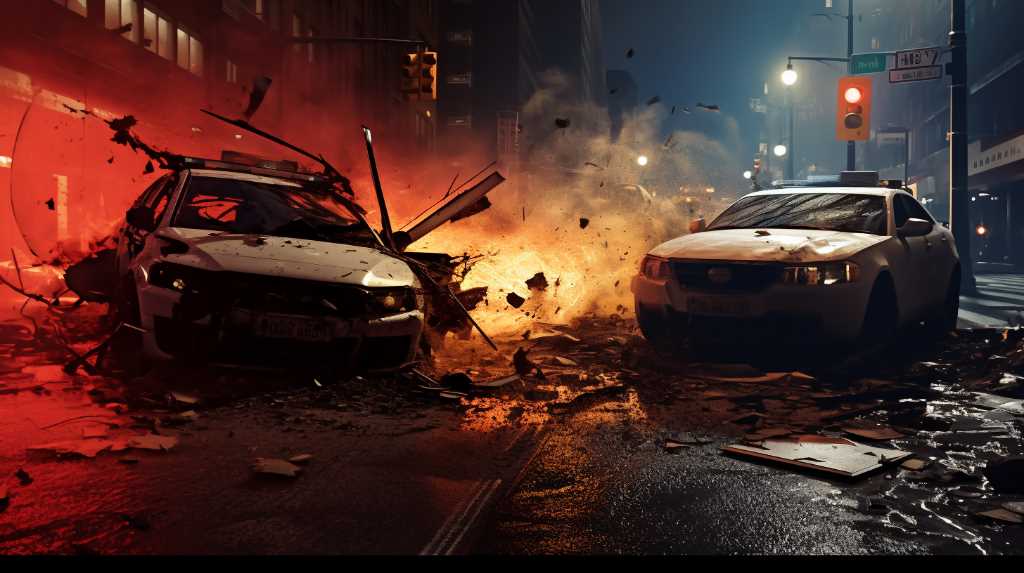
When it comes to car accidents, it’s important to know the difference between a minor one and a major one. This matters for dealing with the law, your insurance, and keeping people safe.
Minor car accidents usually just scratch or dent the car and people aren’t badly hurt. But major car accidents can smash up the car badly and people might get very hurt or even die.
For insurance, a small accident might mean a small claim, but a big accident could cost a lot of money. It’s important for drivers to understand these differences because they affect what happens in court and what kind of trouble you could be in.
If you know the right way to react to each kind of accident, you can help stop more bad things from happening and keep everyone safe.
Defining Minor Accidents
A minor car crash is usually just a small bump or scrape at low speed, like in a parking lot or in heavy traffic. The damage is mostly on the surface, like dents and scratches, and doesn’t mess with the important parts of the car that make it drive safely, such as the brakes or steering.
Since the car can still be driven and everyone is okay, there’s no need for a deep dive into the car’s mechanics or big repairs. It’s important to know this because it means the car isn’t badly broken and you probably won’t have to spend a lot of money or time fixing it.
Characteristics of Major Accidents
In major car crashes, unlike small ones, there’s usually a lot of damage to the car or it might be completely destroyed, affecting how safe it is. These crashes can cause very serious injuries or even death. When experts look at these crashes, they often find the car’s frame is bent out of shape, the inside where people sit is damaged, and lots of airbags have gone off. They usually happen because of high-speed impacts, cars flipping over, or direct crashes that hit with a lot of force.
These big accidents can also make traffic a mess, require a lot of help from emergency teams, and need experts to figure out exactly how the crash happened. They can cost a lot of money too, because of big insurance claims, possible court cases, and the money needed for medical treatment and fixing or replacing the car.
Impact on Insurance Claims
Navigating the aftermath of a major car accident can be challenging, especially when it comes to dealing with insurance claims. These claims often become complex due to the severity of the damage and the potential for significant financial compensation. Insurers have to meticulously assess various factors, including the extent of vehicular damage, personal injuries, and any other impacts like loss of income or long-term disability.
The process of assessing these claims involves a detailed investigation. This includes gathering police reports, witness statements, and expert evaluations. Insurers need to be precise in their assessment because it directly affects claim payouts, premium recalculations, and the potential for litigation.
On the other hand, minor accidents usually result in expedited claim processes. These types of accidents have standardized payouts and minimal impact on insurance premiums. The handling of claims for minor accidents is much simpler and more efficient.
The distinction between major and minor accidents in terms of claim handling is quite stark. Major accidents trigger rigorous scrutiny and have the potential to alter the insured’s risk profile. In contrast, minor incidents are resolved with routine efficiency.
Legal Implications Explored
The legal ramifications of car accidents vary significantly, with minor collisions often requiring little more than an exchange of insurance information, whereas major accidents can lead to extensive legal proceedings involving personal injury lawyers and potential court cases.
In minor accidents, civil liability is usually resolved through direct communication between insurance companies, streamlining the process to a simple transactional resolution.
Conversely, major accidents often involve severe injuries or fatalities, invoking complex liability determinations. These cases may necessitate forensic accident reconstruction, expert witness testimonies, and protracted negotiations over compensatory and punitive damages.
Statutory frameworks and case law intersect to forge a labyrinth of legal procedures, with outcomes hinging on nuanced interpretations of negligence, duty of care, and contributory fault.
The escalation in legal complexity proportionally reflects the severity of the accident’s consequences.
Responding to Different Accidents
In the immediate aftermath of a car accident, the appropriate response varies significantly depending on the accident’s severity. For minor collisions, drivers should safely move vehicles to the roadside, exchange pertinent information, and document the scene for insurance purposes. This process demands attention to detail, ensuring accurate data collection without necessitating immediate emergency services.
Conversely, major accidents warrant urgent action. Safety protocols dictate the activation of hazard lights and the deployment of emergency flares or triangles to alert oncoming traffic. Immediate assessment for injuries is critical, necessitating prompt medical attention if necessary. Law enforcement must be notified, and the preservation of the scene is crucial for subsequent forensic analysis. A systematic approach to these protocols ensures a controlled response to reduce further risk and facilitate an efficient investigation.
Conclusion
The main difference between a small and a big car crash is how much the car is damaged, how serious the injuries are, and the impact on money and legal matters.
Small crashes usually mean little damage and not much paperwork.
Big crashes, on the other hand, can cause a lot of damage and legal issues.
It’s important to know these differences so you can handle a crash the right way and make sure any insurance claims are done correctly.
This makes dealing with car accidents much more organized.